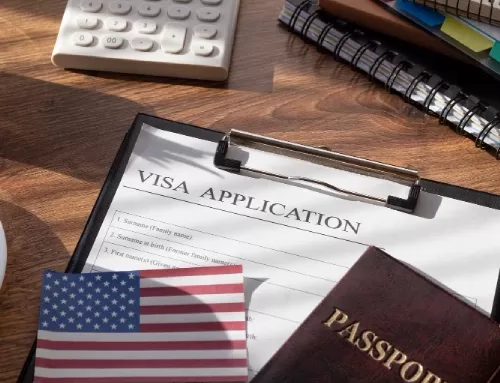The United States of America has a complex and intricate immigration system. Government officials, laws, executive orders, regulations, and policy memos are all factors that contribute to an individual’s deportation. Although every deportation case is unique to each individual, the immigration system in the U.S. is one in crucial need of advocacy, primarily to protect the rights of noncitizens. Typically, every deportation case will have similar steps; however, the time the process takes will vary among deportees. The following is a list of actions that will mostly occur during a deportation process:
Step 1: ICE Finds a Deportable Individual
Although the constitution forbids U.S. Immigration and Customs Enforcement (ICE) from detaining an individual based on perceived ethnicity or a language, ICE officers often use these factors to identify potential noncitizens. The following is a list of ways that ICE officers will attempt to put someone through a deportation process:
- Detained by ICE/CBP agents
U.S. Customs and Border Protection (CBP) agents and ICE officers often perform routine stops to ask for proof of lawful status. A routine stop can occur at the border, in government buildings such as the courthouse, traffic stops, workplaces, and even homes. If undocumented individuals share that they do not have legal immigration status, they can be detained and thrown into a deportation process. Please remember always to assert your Fourth Amendment Right to stay silent and contact an immigration attorney immediately.
- Law Enforcement Informs ICE
Local law enforcement and ICE may both arrest individuals for immigration law violations. Not only do they share information, but local law enforcement will also often physically transfer an individual to an ICE facility.
- USCIS Denies Immigration Application
When the U.S. Citizenship and Immigration Services (USCIS) denies an application, they can notify ICE that an individual does not have lawful status.
- Seeking Entry at the Border
As many know, when an individual arrives at the border, they must show documentation that will allow them to enter the United States. Such documents include; passports, visas, and Lawful Permanent Resident (LPR) cards. If an individual fails to provide such documentation, an officer will often interview and investigate them.
Step 2: The Department of Homeland Security (DHS) Becomes Involved
Once it has been determined that a person does not have legal status in the U.S., the DHS will decide how the deportation process will occur. A significant factor that goes into this type of decision relies on priority. If ICE determines that an individual is a priority for deportation, they may:
- Send an “expedited” removal order
- Begin a removal case
- Implement a previous removal order
Step 3: The Courts Decide
During this step, the court will decide whether an individual can be legally deported or not. Although it is an individual’s right to be represented by an attorney, the government generally does not provide them to someone facing immigration court. Despite that, ICE will often be represented by an attorney who will prosecute the case. Immigration removal proceedings go through two steps:
- Master Hearings:
The Department of Homeland security must prove that the individual in question has violated immigration laws and is not a citizen of the U.S.
- Individual/Merits Hearing:
If a judge determines that a person may be deported, they must wait until their ‘individual hearing’ to apply for immigration status. At an individual hearing, the individual must provide evidence that they are eligible for immigration status based on: fear of persecution, amount of time in the U.S., and/or family relationship.
Step 4: ICE Determines Whether or not to Physically Return Someone
After a final removal order, ICE can legally physically remove them from the United States. Nonetheless, the country they are being returned to must legally accept them for them to be deported. Factors such as; transportation, travel documentation, political conflict, and lack of infrastructure all play roles in a person not being eligible to be deported back to their country. If ICE is unable to deport an individual, they can:
- Detain the individual until physical deportation is arranged.
- Release the individual until physical deportation is arranged.
- Delay deportation due to humanitarian reasons.
If you or someone you know is going through a deportation process or would like to get more information, call Rivera Law at 561-651-9322.







Leave A Comment
You must be logged in to post a comment.